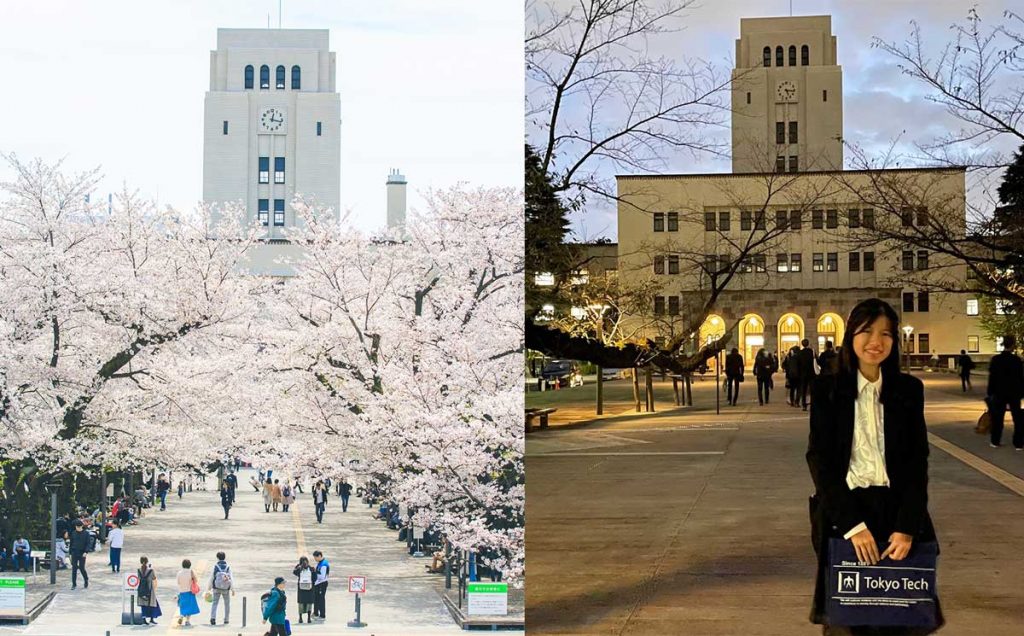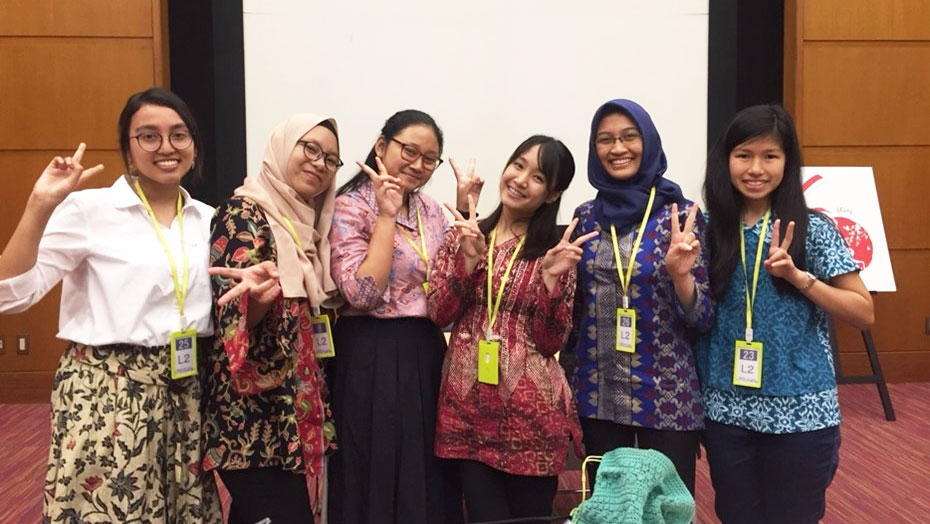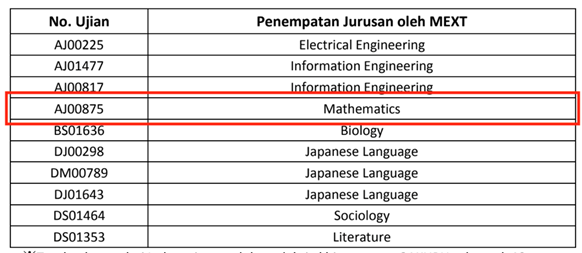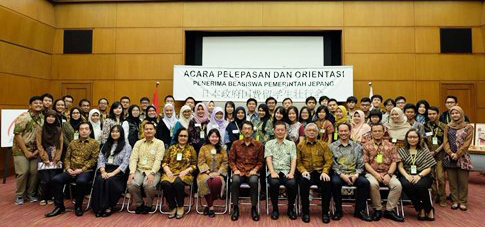Dreaming of studying abroad in a prestigious university like Science Tokyo with a full-ride scholarship? I was, too! Then you start wondering, “When’s the right time to go?” Let me try to answer the question: as early as possible! No need to wait until a master’s or doctoral program; you can start right after high school.
However, getting into Science Tokyo involves several steps. While there are various paths to pursuing a bachelor’s degree here, I will tell you my story of securing the MEXT G-to-G (Embassy Track) Scholarship —the route that made my dream of studying abroad a reality.
DISCLAIMER: This story is based on my personal experience with the application for the GAKUBU program MEXT G-to-G in 2019 as an applicant from Indonesia. The selection process, documents needed, and timeline might have changed in recent years and might differ based on your country.
Why study abroad?
Studying abroad in a developed country is a dream of many, especially for children growing up in developing nations. The technology and advancements of these countries were fascinating—things we could only glimpse through TV or newspapers (social media wasn’t as widespread back then 😉). I was no exception. In my final year of senior high school, I began considering studying abroad as an option.
Back then, I had two reasons that made me consider studying abroad. First, like many others, I felt there were so many universities all over the world offering extraordinary education quality that Indonesia could not yet provide. The second—and perhaps the bigger reason—was that after 18 years in my homeland, I was craving something new. I believed there was more to life than what I had experienced in Indonesia, and I wanted to see it for myself. At the time, applying to study abroad felt like the most realistic way to “get out of my comfort zone.”
However, like many of us from smaller countries, I faced one big problem: money. There was no way I could ask my parents to fund an expensive college tuition, let alone support my life in another country. I did not come from a very wealthy family that could afford the luxury of sending their daughter to study overseas out of pocket. Hence, my brilliant—though somewhat naïve—solution was simple: find a way for someone else to fund my education. A fully funded scholarship became my only option.

How did I discover the MEXT scholarship?
Speaking about study abroad and scholarship, there are a bunch of options. As I mentioned before, to fulfill my dream, I needed a guarantee that I would get a fully-funded scholarship – covering tuition and a stipend – for the entire duration of my studies. With this condition, the choices narrowed, especially for undergraduate studies. At first, I looked for scholarship offers from various universities in Asia, Europe, and the United States. Unfortunately, they either did not meet my conditions, or they rejected me. Then, I was introduced to the MEXT scholarship by a friend of my mom, who is also an alumnus of that scholarship. He talked with me and encouraged me to apply. Thus, I tried to search more about this scholarship on the Embassy of Japan website.
What is MEXT G-to-G Undergraduate?
MEXT (in Japanese 文部科学省 Monbukagakusho) stands for the Ministry of Education, Culture, Sports, Science and Technology. They collaborate with other countries (including Indonesia) through the Embassy of Japan to search for promising students who want to earn a degree in Japan by providing fully funded scholarships. This is one aspect of diplomatic relations between Japan and Indonesia (and many other countries). Since the selection and screening processes are done entirely through the embassy, we call it the MEXT G-to-G (Government-to-Government) Program. You can find more information about the MEXT scholarship here.
MEXT G-to-G for Undergraduate Studies has been very appealing in my opinion. Here is a rough idea of what they offer:
- Full tuition and stipend for “n+1” years of study (“n” represents the years of study depending on the program, plus 1 year of Japanese Language Preparation Course)
- There is no obligation to work in Japan after the completion of studies. It is a pure cooperation program to improve human resources between countries, so there are no worries about being locked into a certain career path
For MEXT G-to-G for Undergraduate Studies, you can choose among three programs:
- GAKUBU (Bachelor’s degree, “n” = 4 years),
- KOSEN (College of Technology, “n” = 3 years), and
- SENSHU (Specialized Training College, “n” = 2 years)
In my case, I applied for the GAKUBU program, and I will share the details about it. For the other programs, you can check them out on each countries’ embassy of Japan website (you can search on your favorite search engine with the keywords “MEXT embassy track (insert your country name)”.
For the GAKUBU program, the nominee will be placed in the pre-designated Japanese Language preparation school (either in Tokyo or Osaka) for a year. After finishing preparatory school, they continue to a 4-year bachelor’s degree program in a public or national university.
MEXT G-to-G GAKUBU Program Application Process
Here is the whole process of applying for the MEXT G-to-G program, starting with submitting an application through my home country’s embassy for the GAKUBU program for April 2019.
Step 1: Document screening
In this step, you simply need to fulfill all the document requirements. These include:
- Proof of online registration
- Application form (personal information, desired major, motivation letter)
- High school transcript
- Recommendation letter
- Language certificate (JLPT / English) (depending on the major)
- Any certificates of achievement to enhance your profile
Then, once you’ve done preparing everything, you can just send it to your home country’s embassy and wait for the results. ☺
The important point: in this step, you cannot choose your desired university directly. You can only choose up to three majors. This means that I also did not apply directly for Science Tokyo (formerly Tokyo Tech), but only wrote my desired major, Mathematics as my first choice, and Computer Sciences as my second choice.
In my experience, you don’t need to worry too much about your Japanese ability, especially if you’re applying for a natural sciences major.I did not even know a single Japanese word (I did not even know what hiragana and katakana are).
The deadline may vary depending on the country and year. In my case, the deadline for the document screening was in early May.
>>Tips & tricks: Check frequently website of Japanese Embassy in your home country!
They usually update the information about MEXT G-to-G on each country’s embassy website. Just search in your web browser with the keyword “MEXT GAKUBU program (insert your country name)” and I am pretty sure you will find your country’s embassy website about the MEXT scholarship.
Step 2: Written test
After several weeks, the results of the document screening came to my mailbox. I found my registration number was listed among the written test applicants! So, here we go for the next step: the written test.
There were about 200 people who were called for the written test, from among thousands of applicants for the GAKUBU program itself. The test was held in early July (3 July 2018, in my case). For Natural Sciences, the written tests are Math, Physics or Biology, Chemistry, English, and Japanese. For the Social Sciences, the tests are only Math, English, and Japanese.
The test questions were written in English (thank God!), except for the Japanese test. As for the scope of material, I think the test was quite similar to the difficulty of a Japanese university entrance exam – in other words, it is high school material, but a little bit more challenging.
To prepare for the math, physics, and chemistry exams, I studied A-level math, physics, and chemistry while solving questions from past exams. The past exams really helped me, as I could learn what kind of questions usually appear. I also used the internet to browse some additional material to learn.
For the English test, I think studying past exams is enough to know what kind of questions are asked, because it is quite varied.
And here comes the ultimate boss: the Japanese test. As I mentioned before, my Japanese skill was nearly zero, and I needed to face the 300 Japanese problems that I could not even read. So, I just filled the multiple-choice section without even reading the questions and then slept for the rest of the time. 😅 It is obviously an advantage if you have some Japanese skills beforehand, but note that there are also people like me who do not even know what ohayo gozaimasu means.
>>Tips & tricks: past exams are the key!
Past exams really helped my preparation for the written test. I printed them out, tried to solve the questions, and checked my solutions based on the answer key. The important thing is that I did not do well on my first try, as I could only solve about 40% of the questions for Physics and 30% for Chemistry. It was terrible. But by doing that practice, I learned what kinds of questions they would ask and focused on drilling such questions. On the day of the written test, I think I did pretty well. ☺
Step 3: Interview
Another several weeks later, an email came to my inbox, and guess what: I was selected as the one of nineteen people to reach the interview selection from among the 200 people who took the written test!
The interview was scheduled for a week after the results came at the Embassy of Japan in Indonesia in Jakarta. Since I am not from Jakarta, I had to get ready to travel there in just a week!
For the interview, 19 of us were divided into four groups. This is the unique part: instead of a 1-on-1 interview, we had a group interview! I got into the first batch together with three of my friends who also applied for Natural Sciences.
Here is how the interview process went. We entered the room together, then were seated in a predetermined order. There were three interviewees – two Indonesians (past alumni of MEXT programs), and an embassy representative from Japan. You can choose to be interviewed in English or Japanese.
The interview proceeded like this:
- We started with self-introductions: name, region, school, hobbies, etc. It was a casual and enjoyable conversation to start the interview.
- We were asked why we wanted to study in Japan and what we wanted to do after that.
- Each of us got a random question that differed from each other. These could be unexpected questions, such as:
- How do you cope with stress, especially considering the potential isolation of arriving alone in Japan and the individualistic nature of Japanese culture?
- Describe your strengths and weaknesses.
- If you only indicated one choice of major, why do you only choose one when you could choose up to 3 majors? What makes you so confident in only choosing one?
The pressure was intense because you can hear what other applicants say, and the others can hear and judge you as well. Regardless, we remained friends and chatted regularly after the interview, and we have remained friends to this day.

Step 4: Waiting…? -The international selection process-
Just a few days later, we got another email notification from the embassy. Yep, out of 19 people who were called for an interview, it was decided that only 15 people would be recommended to the Japanese Ministry of Education for a scholarship. Yes, you heard it right; this is not the end of the selection process. These 15 people will be the representatives from Indonesia who will be recommended to the center and will be considered along with applicants from all over the world. So, of these 15 people, not all of them would necessarily end up becoming awardees, and we did not know when the final announcement would be. While waiting for this uncertainty, we all went back to our daily lives.
Four months passed. I lived my daily life safe and sound, and eventually I almost forgot I had applied for the MEXT scholarship. Then, one day at the beginning of December…
Ting! An email notification arrived.
It was from the Embassy of Japan in Indonesia. Hey, long time no see! But at that very second, I was really nervous again, so I hoped that my name would be on one of the awardee lists. I opened the email…
I got it. My application number was there!

I was shocked; I didn’t know how to react. The wait and effort had finally paid off. My dream of studying abroad was realized. I felt really, really blessed for this opportunity, and I want to give a big thanks to everyone who shared their endless support throughout the process. And on this day, my whole new journey as an international student in Japan began. By the way, out of 15 people who got recommended by the embassy, only ten of us finally got the scholarship.
So, this is the summary of the timeline of the whole application process:
The timeline of MEXT G-to-G Undergraduate Application Process

Yes, the total process from sending in files at the beginning, to getting an acceptance letter at the end, was 8 MONTHS. The process was indeed not a short one, but still very worth it.
Farewell party at the Embassy
After the acceptance letter, we started preparing other requirements, such as the visa application and other documents. During this period, I decided to fill my days catching up with friends and relatives before I went on my new journey.
Fast forward to March 2019: our farewell party at the embassy. We had a chance to meet the ambassador, other fellow awardees, and program alumni. It was a great opportunity to meet fellow awardees (again) and get a bunch of advice from our seniors before departure.

Thus, the “real” journey started
On April 2, 2019, I officially stepped foot in Japan for the first time. Since then, a new chapter of my life, “the Journey to the Land of the Rising Sun,” has begun. I started my journey of the roller coaster Japanese language preparation at Osaka University, then along with that I also took the test for university and got an acceptance letter from (then) Tokyo Tech. I moved to Tokyo and began my journey here in April 2020, in the middle of COVID-19. I might need a separate blog to tell you about this chapter of my story, so be ready to get excited for the second season of the story of my journey to Japan (hopefully I can publish it soon!).
Now, it is time for you to write your own journey!
As an international student, you can start your journey at Science Tokyo as early as when you are a bachelor’s student, with a full scholarship. As this route of joining Science Tokyo is less common than others (Masters / Doctoral program, IGP, etc.), I hope my experience is useful and inspiring, and we look forward to seeing you at Science Tokyo!
